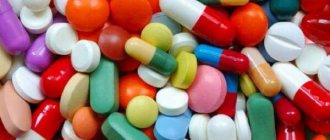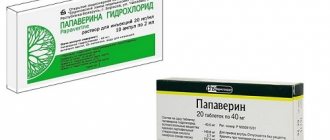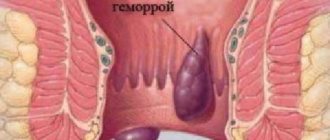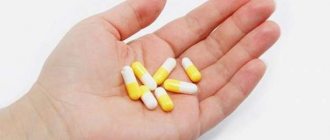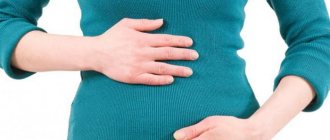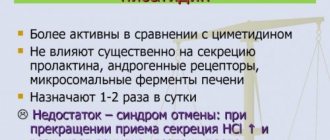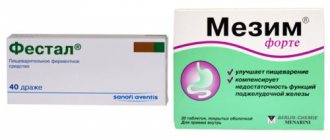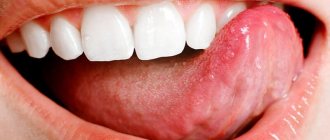The world of medical terms is diverse. In order not to get confused in a large number of new words, to understand whether there are differences between the concepts of FGDS, EGDS and FGS, it is important to understand the terminology, features and purpose.
The term EGDS (esophagogastroduodenoscopy) differs from FGDS only in the fibrous part. But this does not in any way affect the specifics of the procedure. To the question, what is the difference between FGDS and EGDS, the answer is simple, since it simply does not exist. Whichever of the two words indicated is in the direction, the doctor will completely and carefully examine the upper digestive tract. These two procedures are performed by an endoscopist in a special room.
Decoding concepts
Both methods are carried out with a medical device - a gastroscope, which displays the condition of the mucous membrane through the lens. During the examination, the doctor may remove a small piece of tissue for microscopic examination.
Fibergastroscope
To understand the differences between each method, let’s decipher their names:
- FGS is fibrogastroscopy. Translated from Greek: “gaster - stomach”, “skopeo - look”. That is, this research method only involves studying the gastric mucosa and assessing its condition to make a diagnosis. The prefix “fibro-” translates as “fiber” and symbolizes the long gastroscope probe that penetrates the esophagus.
- FGDS stands for fibrogastroduodenoscopy. Here in the middle of the word we see “gaster - stomach” and “duodenum - duodenum”. That is, during the examination, the gastroscope probe first assesses the condition of the stomach, and then penetrates further along the digestive tract into the initial section of the small intestine - the duodenum.
In terms of technique FGDS is a more complex method ; it is prescribed when a comprehensive assessment of the initial third of the digestive tract is necessary.
How is it carried out?
The main task of the doctor during gastroscopy is to penetrate the problem areas of the digestive system with a probe, obtain images and take material for biopsy (if necessary). The procedure itself is unpleasant for the patient and is accompanied by discomfort during swallowing of the probe and its movement.
- You can read how to minimize discomfort here.
- Learn about breathing techniques during the procedure here.
- You can also always use sedation or anesthesia.
- Or alternative diagnostic methods.
For the patient, there is no noticeable difference between FGS and FGDS; the differences lie in the depth of penetration of the gastroscope and the time during which the study is carried out.
The procedure consists of the following steps:
- Pain relief - the throat is irrigated with lidocaine solution. This allows you to reduce gagging and discomfort during the passage of the probe.
- The patient lies on his left side - this position facilitates the passage of the tip. The stomach has a left-sided bend; in this position, nothing interferes with the probe. For convenience, a cushion is placed under the waist, and a container for saliva is placed near the mouth.
- Insertion of the probe - the patient swallows the tip, then the doctor slowly moves it along the esophagus and into the stomach. The specialist takes pictures, takes scrapings or material for research. If an FGDS is performed, the doctor then penetrates the duodenum and repeats similar manipulations.
Carrying out FGS
The gastroscope tube is designed in such a way that the doctor can change the direction of the tip. This allows you to move easily and unhindered through the gastric tract without injuring the mucous membrane . On the working part there is a flashlight for illumination, special nozzles that pump water or air to inflate the cavities and clean the lens. The probe is removed in the reverse order, slowly and carefully.
Help During the procedures, it is strictly forbidden to try to talk, make movements, cough, or clench your jaws - this can damage the mucous membrane! Experts recommend trying to relax, breathing slowly and deeply.
What is the difference?
Let us note the main differences between gastroscopy of the stomach and FGDS - we present them in the table below.
| Criterion | FGS | FGDS |
| Scope of study | Only stomach | Stomach and duodenum |
| Discomfort during the procedure | Moderate | May be more pronounced |
| Possibility of complications | Less | More |
| Comprehensive assessment of the initial part of the digestive tract | Absent | Present |
| Volume of readings | Small | Wide |
FGDS involves examination of the stomach and duodenum , which can increase the time of the procedure, but this point largely depends on the practical skills of the doctor.
During FGDS, the device passes through the pyloric sphincter into the duodenal bulb, which increases discomfort during the procedure.
With FGDS, it is possible to conduct a comprehensive assessment of the mucous membrane of the stomach and duodenum. Such a comparison expands diagnostic capabilities and makes the technique more valuable.
Is the procedure itself painful and is it possible to use anesthesia during it?
In most cases, to significantly reduce pain during examination, doctors use medications that have a local effect of anesthetizing the pharynx and oral cavity, or short-term anesthesia drugs that can put the patient into a short sleep, which can completely eliminate all painful sensations and memories about the procedure.
Most often, FGDS with the use of anesthesia is used to conduct observations in children or restless patients who are simply unable to endure this examination in any other way.
If you do not use anesthesia, then FGDS is an absolutely painless procedure, but at the same time very unpleasant. Particularly unpleasant sensations appear at the moment when a probe is inserted into the oral cavity.
Indications
Both methods are prescribed depending on the patient’s complaints and based on a doctor’s examination. If suspicions are limited only to damage to the stomach, FGS is performed. FGDS is relevant in cases where there is a risk of involvement of the duodenum, gallbladder and pancreas in the pathology. We provide basic information about the indications in the table below.
| Indications for FGS | Indications for FGDS |
|
|
Let us note the features of the indications for both procedures:
- FGS is prescribed when the doctor is sure that only the stomach is affected. This procedure will be faster and will cause the patient a minimum of discomfort, and when examined in a private clinic, it will also save money.
- FGDS is important for lesions of the duodenum. It is also prescribed for suspected diseases of the pancreas, liver and gall bladder. The doctor can judge the state of their work by the nature of the discharge and the results of changes in the papillary zone.
When is it appointed?
If we talk about the need to conduct an FGDS, it is worth noting the fact that such an examination can be carried out for no apparent reason, since some types of diseases, especially in the initial stages, can proceed completely unnoticed. Many doctors also recommend this examination just in case, because any disease is easiest to defeat at the initial stage of development. Among the indications that indicate the direct need for an FGDS examination, it is worth noting the following symptoms:
- Constant pain in the abdominal area, which is of a different nature and repeats with different frequencies. Feeling of discomfort in the abdomen.
- Heartburn, nausea, constant belching of small amounts of air or food.
- Constantly recurring vomiting that continues for some period of time.
- For previous illnesses: stomach ulcers, duodenal ulcers, or cancerous tumors.
- A sharp decrease in body weight, a significant decrease or complete lack of appetite over a fairly long period of time.
If the patient experiences any of the above symptoms, the doctor will definitely prescribe an FGDS examination. If you have not been examined by a doctor, but you experience one or more of the symptoms described above, as well as discomfort or pain, you can sign up for the procedure yourself at a local hospital.
What do the studies diagnose?
When performing FGS, pathological changes in the stomach of an inflammatory and traumatic nature are revealed, which caused the appearance of symptoms. The doctor examines the epithelium and takes the necessary photographs. A biopsy is taken to exclude oncology.
FGDS diagnoses the conditions listed above, and additionally identifies diseases of the duodenum in the form of ulcerative lesions and various injuries . Based on a visual examination, the functioning of the biliary system and pancreas is assessed.
Preparation
Before the examination, you should pay attention to your diet - since the procedure is unpleasant and can cause vomiting, you will need to follow a small diet.
It is important to give up bad habits and consult a doctor. During the initial examination, you can study in detail the advice of specialists and the rules of conduct during procedures. Detailed article about preparing for FGDS at this link.
After the procedure
After the procedure, mild abdominal pain may occur.
If short-term anesthesia was used during FGDS, then after the procedure the observed person is sent to a special ward, where he can safely remain until the effect of the drug completely wears off.
If only local anesthesia was used during the examination, the patient can immediately go home or wait in the corridor for some time, which is necessary for the doctor to complete the examination. After an FGDS examination, some patients may experience symptoms such as:
- Minor pain in the abdominal area
- Mild nausea
Immediately after the procedure, you should not eat or drink water for several hours.
Alternative Methods
Sometimes situations arise in which the use of a gastroscope is impossible - due to intolerance to discomfort, the presence of contraindications and other reasons.
In such cases, additional methods may be prescribed. Let's display them in table form and compare them with gastroscopy - note the pros and cons.
| Research method | Advantage | Flaw |
| Ultrasound | Painless examination, minimal contraindications | The mucous membrane is displayed worse than with gastroscopy |
| MRI | Painless examination, minimal contraindications | It is impossible to conduct a study if you have claustrophobia, pacemakers or metal implants |
| CT with contrast | The procedure is faster, less discomfort | The study is accompanied by radiation |
| Using the video capsule | Painless examination, minimal contraindications | The quality of the images depends on intestinal motility; there is no possibility of directed examination. |
safety for the patient’s health and information content are primarily taken into account . Sometimes it is better to endure discomfort for the sake of an accurate diagnosis than to treat complications later.
How does the patient feel?
- Bronchial endoscopy is accompanied by local anesthesia, which causes a sensation as if the nose is stuffy. First, the tongue and palate become numb, and a feeling of “lump” appears in the throat. It is difficult to swallow saliva for some time.
- Modern techniques allow the procedure to be performed without pain.
- The diameter of the device is much smaller than the lumen of the lungs, so endoscopy is a completely safe procedure; you should not be afraid that you will suffocate during the procedure; a specialist is responsible for the patient’s health.
Spontaneous breathing is not impaired in any way.
What can gastroscopy of the stomach do?
During the procedures, it is possible not only to identify various pathologies of the digestive system, but also to carry out therapeutic manipulations. Modern gastroscopes are equipped with useful functions and allow you to do without surgery in some cases.
With gastroscopy you can:
Taking a biopsy during FGDS or FGS
- Removing polyps is a potential cancer threat. If the doctor discovers these tumors during the procedures, they are cauterized using a gastroscope.
- To carry out bougienage is an expansion of the narrowed esophagus. The device moves deformed shells apart and restores patency.
- Spray the medicine - a gastroscope is capable of spraying medicines over a specific area of the mucosa. This option is widely used to eliminate hidden bleeding.
- Take a biopsy to determine the bacteria Helicobacter pylori or to check for tumors.
- Take a stomach acid test.
Preparatory stage before the FGDS examination
At the very beginning, you should psychologically tune in to the fact that this examination is by no means pleasant, but also does not cause much pain. Before the examination, you must completely empty your stomach 12 hours before, do not eat or drink. Be sure to take a small towel and all the necessary documents with you.
It is worth understanding that during the examination, your clothes may be stained with the contents of the stomach, because regurgitation during FGDS is an absolutely normal phenomenon.
During the examination, the patient, as is customary, is positioned in a lying position on the left side. A person cannot talk during FGDS, but can hear the words and advice of the doctor and nurse, making the procedure more comfortable. If the device is already inside, it is strictly forbidden to make sudden movements and try to pull it out, as this can cause great harm to the body.
Contraindications
Before conducting a study, it is important to take into account the limitations - ignoring contraindications is dangerous for the health, and sometimes even for the life of the patient.
We list when gastroscopy cannot be done:
- problems with blood pressure are noted;
- history of stroke or heart attack;
- there is a risk of bleeding ;
- the patient has bronchial asthma ;
- mental disorders are noted.
